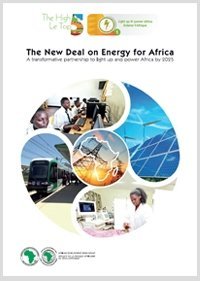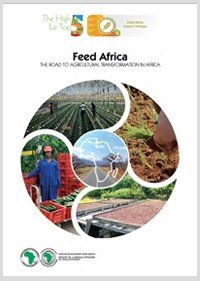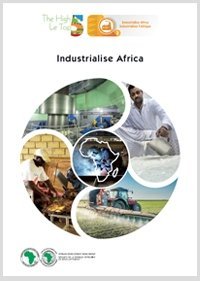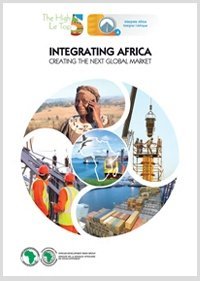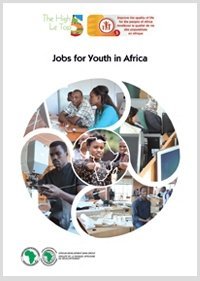
A game changer in Africa’s development discourse
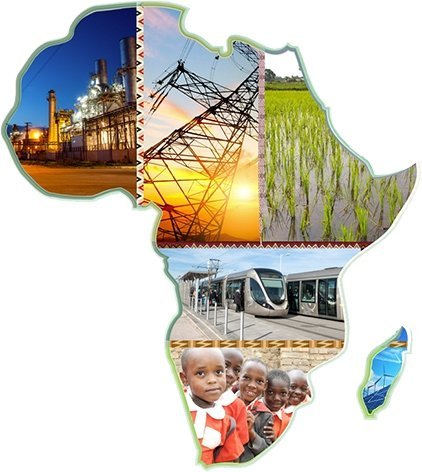
In his inaugural address on September 1, 2015, the eighth elected President of the African Development Bank Group, Akinwumi Adesina, set down a new agenda for the Bank Group, building on its existing 2013-2022 Strategy. In his speech, he outlined the five development priorities for the institution. The High 5s are to: Light up and Power Africa; Feed Africa; Industrialize Africa; Integrate Africa; and Improve the Quality of Life for the People of Africa. These focus areas are essential in transforming the lives of the African people and therefore consistent with the United Nations agenda on Sustainable Development Goals (SDGs).
In 2013, the African Development Bank’s Board approved a Ten Year Strategy covering the period 2013-2022, entitled At the Center of Africa’s Transformation (TYS). The overarching twin objectives of the TYS are the achievement of inclusive growth and the transition to green growth through five operational priorities: infrastructure development, regional economic integration, private sector development, governance and accountability, and skills and technology. In addition, the TYS highlights three areas of special emphasis: gender, fragile states, and agriculture and food security.
In September 2015, world leaders agreed to an ambitious set of Sustainable Development Goals, with the objective of eliminating extreme poverty from the planet by 2030. A few months later, at the Twenty First United Nations Conference on Climate Change (COP21) in Paris, an equally ambitious agreement on Climate Change was reached. To respond to this ambitious development mandate, the global community has tasked the Multilateral Development Banks (MDBs) to significantly scale up their activities by leveraging and crowding in financial resources and moving from “billions to trillions”, as was articulated during the UN Financing for Development conference held in July 2015.
These ambitious development goals will only be realized if they can be achieved in Africa. The Bank is responding to the challenge of supporting inclusive growth and the transition to green growth by scaling up investment and implementation of the TYS by focusing on five priority areas, referred to as the High 5s.
Light Up and Power Africa – A New Deal on Energy for Africa
Universal Access to Electricity
- +162 GW electricity generated
- + 130 million on-grid connections
- + 75 million off-grid connections
Over 640 million Africans have no access to energy, corresponding to an electricity access rate for African countries at just over 40 percent, the lowest in the world. Per capita consumption of energy in sub-Saharan Africa (excluding South Africa) is 180 kWh, compared to 13,000 kWh per capita in the United States and 6,500 kWh in Europe.
Access to energy is crucial not only for the attainment of health and education outcomes, but also for reducing the cost of doing business and for unlocking economic potential and creating jobs. Insufficient energy access manifests itself in hundreds of thousands of deaths annually due to the use of wood-burning stoves for cooking; handicaps the operations of hospitals and emergency services; compromises educational attainment; and drives up the cost of doing business. Energy access for all is therefore one of the key drivers of inclusive growth as it creates opportunities for women, youths, children both in urban and rural areas.
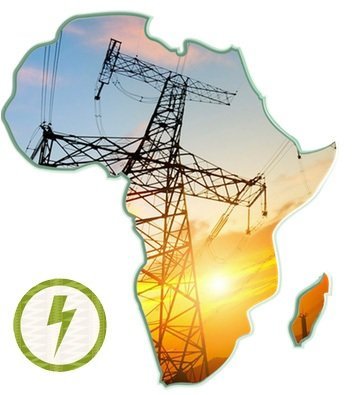
Africa’s energy potential, especially renewable energy, is enormous, yet only a fraction of it is being currently employed. Hydropower provides around a fifth of current capacity but not even a tenth of its total potential is being utilized. Similarly, the technical potential of solar, biomass, wind and geothermal energy is significant. While renewable energy will be prioritized by the Bank, fossil fuels will remain an important part of the overall energy mix, as is the case with several developed economies, with the Bank financing state of the art technology to minimize emissions.
The Bank has launched a New Deal on Energy for Africa, which is built on five inter-related and mutually reinforcing principles: (i) raising aspirations to solve Africa’s energy challenges; ii) establishing a Transformative Partnership on Energy for Africa; (iii) mobilizing domestic and international capital for innovative financing in Africa’s energy sector; (iv) supporting African governments in strengthening energy policy, regulation and sector governance; and (v) increasing African Development Bank’s investments in energy and climate financing.
The Bank’s energy strategy, central to implementing the New Deal, focuses on seven areas, which are: (i) setting up an enabling policy environment, (ii) transforming utility companies for success, (iii) dramatically increasing the number of bankable energy projects, (iv) increasing the funding pool to deliver new projects, (v) supporting ‘bottom of the pyramid’ energy access programs, particularly for women, (vi) accelerating major regional projects to drive integration and (vii) rolling out waves of country-wide energy ‘transformations’. The Bank will implement these priorities through a series of flagship programs such as: IPP procurement, power utility transformation, an early stage project support facility and related catalytic programs, mobile payment initiatives, and a regional project acceleration program.
“Africa is simply tired of being in the dark. It is time to take decisive action and turn around this narrative: to light up and power Africa – and accelerate the pace of economic transformation, unlock the potential of businesses, and drive much needed industrialization to create jobs.”
– AfDB President, Akinwumi Adesina
The aspirational goal of this priority area is to help the continent achieve universal electricity access by 2025 with a strong focus on encouraging clean and renewable energy solutions. This will require providing 160 GW of new capacity, 130 million new on-grid connections, 75 million new off-grid connections and providing 150 million households with access to clean cooking solutions. To achieve these goals it is estimated that the investment needed will range between US $60 billion and US $90 billion per year. The Bank will invest US $12 billion of its own resources in the energy sector over the next five years.
Feed Africa
Agricultural Transformation
- + 150m people adequately fed
- + 100m people lifted out of poverty
- + 190m hectares with restored productivity
Access to food – in quantity and quality – is a fundamental human right. It is also essential for ending hunger and malnutrition, and ensuring a healthier and productive workforce. Although agriculture employs over 60 percent of the African workforce and accounts for roughly a third of the continent’s GDP, Africa is the most food-insecure region in the world with more than 232 million under-nourished people, or approximately one in four.
Structural food insecurity is a particular challenge in fragile economies, which are disproportionately susceptible to resource and commodity price shocks and where poor agriculture infrastructure, governance and weak institutions result in low productivity and a heavy dependence on food imports. Women face systematic discrimination across the continent, for example in terms of land ownership, which severely limits their opportunities to benefit from agricultural value chains. This is further multiplied by women’s unequal access to inputs, household decision making, education, finance, and markets. FAO estimates that closing the gender gap could increase farm yields by 20-30%, and there is wide-spread evidence that closing the gender gap within households has wide-spread benefits for families.
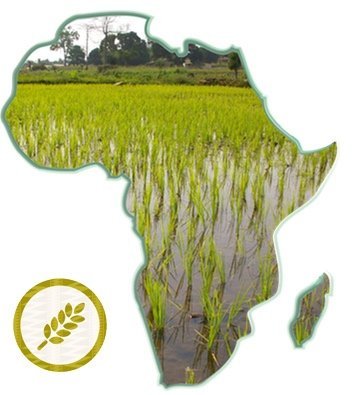
As a result of these factors, Africa had an estimated net food import bill of US $35.4 billion in 2015, with about 15 food chains accounting for most imports, including 5 staple commodities such as wheat, sugar, rice, beef, soybeans.
Africa’s potential for agricultural production is enormous, with 60% of the world’s unused arable land. Increased food demand and changing consumption habits are leading to rapidly rising net food imports, which are expected to grow from US $35 billion in 2015 to over US $110 billion by 2025, which could be offset by increased African production. Export of primary agricultural production is still very high in Africa compared to other regions of the world. Therefore, agriculture offers a realistic prospect for large-scale job creation, especially in fragile economies. Given the importance of food and nutrition, promoting agricultural value chains and improving market access have the potential to diversify economies, raise incomes, increase food security and macroeconomic stability, contribute to mitigating conflict and prevent internal and external migration.
The Bank has developed a strategy for long-term agricultural transformation in Africa. In October 2015, the Bank organized a high-level Ministerial Conference on “Feeding Africa – An Action Plan for Transforming Agriculture in Africa” in Dakar to map out how to unlock Africa’s agricultural potential and boost job creation in view of diversifying economies. The Agricultural Transformation Agenda (ATA)(1) supports the realization of key Sustainable Development Goals through the development of an inclusive and competitive African agribusiness sector. Underpinning this vision are four specific goals: (i) contribute to the end of poverty; (ii) end hunger and malnutrition; (iii) make Africa a net food exporter; and (iv) move Africa to the top of export-orientated value chains where it has comparative advantage.
Through its strategy, the Bank will help unlock the potential of low-income countries using an approach where countries start treating the sector as a business and a starting point for industrialization. Unlocking agricultural potential and tackling food insecurity will require sustained multi-sectoral interventions (e.g. infrastructure development, intensive use of agro inputs and mechanization, enhanced access to credit and improved land tenure systems), appropriate policy reforms, promoting employment of the youth and women, and adopting an integrated value-chain approach that emphasizes access to markets and climate-smart agriculture. The Bank will work with others to promote, where appropriate, the development of agro-allied industrial zones that can produce value-added products. The Bank will also invest in regional infrastructure and enhanced policy dialogue to remove trade barriers, thereby assisting in reducing food price volatility and food insecurity. Finally, the Bank will prioritize agricultural projects that target gender inequality and enable women to have equal access to opportunities throughout agricultural value chains.
The Bank intends to play a key role in catalyzing agricultural transformation, working in conjunction with its partners, in three ways: (i) orchestrate at the sector level the activities of the Bank and partners to create impact-oriented borrowing plans and an evidence-based implementation plan for transformation, in the form of an ‘Agricultural Transformation Partnership for Africa’ (ATPA); (ii) design and lead the operation of areas that are both critical to drive transformation and for which the Bank is able to leverage its comparative advantages; and (iii) scale and replicate the activities and programs of partners that have demonstrable success and the potential to play a key role in country and commodity specific transformation.
“There is absolutely no reason why Africa is a net food-importing region, spending over $35 billion importing food. Africa must feed itself – and Africa must become a global powerhouse in food and agriculture.”
– AfDB President, Akinwumi Adesina
The overall goal of the Feed Africa priority is to make Africa a net food exporter by 2025. Transformation will involve mobilizing resources and capital, representing a significant opportunity for potential to drive inclusive and green growth actors along the value chains. Transforming an initial set of agricultural value chains will require approximately US $280-340 billion over the next decade. Such an investment would likely create new markets worth US $55-65 billion per year by 2025. The Bank Group’s investments in agriculture (both public and private) are envisaged to quadruple from a current annual average of US $612 million to about US $2.4 billion.
Industrialize Africa
Economic Diversification
- Industrial contribution to GDP increased by 130%
- 35 special economic zones supported
- 30 PPPs developed & strengthened
Africa is at the bottom of the global value chain with its share of global manufacturing at around only 1.9 percent. African economies still rely too heavily on raw commodities; between 2011-2013 manufactured goods made up only 18.5 percent of exports, while 62 percent of total imports were manufactured goods, a commercial imbalance that drains wealth away from the continent. This situation is even worse in countries where a combination of structural constraints and political instability jeopardize any effort for private sector-led economic diversification and transformation. Consequently, most countries have not created the jobs necessary to absorb the significant number of youth, compelling hundreds of thousands to migrate overseas.
To unleash their full potential, African countries must embark on a bold agenda driven by private sector-led investments in industrial transformation.
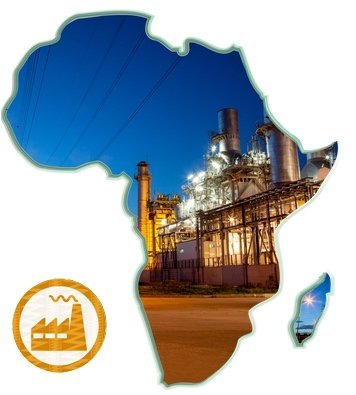
There is a real opportunity, for Africa to create jobs and promote inclusive economic transformation through domestic manufacturing and a commodity-based industrialization process, capitalizing on the continent’s resources and opportunities presented by the changes in the structure of global production. Exploiting Africa’s opportunities for industrialization involves adding value to domestic products, soft and hard commodities and developing forward and backward linkages to the regional and international value chains.
Through the Industrialize Africa priority, the Bank will address a diversity of challenges and foster value creation, formal employment and positive commercial gains, including through regional trade and enhanced balance of payments. It will support productivity enhancement through automation, quality management, improved processes and training. In line with the Bank Group’s Private Sector Development Strategy, the Bank will target improving the capacity of Africa’s producers, particularly manufacturers and related industries, to compete with imported products in local markets, and help to link them to regional and international markets. It will also support the development and expansion of SMEs, industry clusters and the establishment of private-public partnerships as a means to leverage resources for financing the industrialization process.
To operationalize this priority, the Bank will launch six flagship programs to accelerate industrialization across the targeted sectors. They are: (i) foster successful industrial policies by providing policy advisory services and technical assistance to governments and funding key PPP projects; (ii) catalyse funding into infrastructure and industry projects by increasing and channelling funds into GDP catalytic programs (infrastructure and industrialization projects, by public and private operators); (iii) grow liquid and effective capital markets by improving access to market finance for African enterprises; (iv) promote and drive enterprise development by facilitating access to financing by expanding SME-focused lines of credit, providing technical assistance to SME development institutions (e.g., incubators, SME-focused financial institutions, those targeting under-served demographics such as women) and building SMEs’ capacity via linkage programs with private sector investment; (v) promote strategic partnerships in Africa by linking African enterprises and major projects with potential partners and investors through promotional activities, notably the African Investment Forum; and, (vi) develop efficient industry clusters by supporting governments in developing efficient industry clusters across Africa, through technical assistance and funding in implementation and monitoring.
“There is an urgent need for Africa to rapidly diversify its economies – and add value to everything that it produces. 4 Exporting raw materials only leads to vulnerabilities – and no nation or region has succeeded by simply exporting primary commodities.”
– AfDB President, Akinwumi Adesina
The Bank’s ambition is to help double the industrial GDP by 2025, and by so doing help increase its industrial GDP to US $1.72 trillion, with overall GDP increasing to US $5.6 trillion, mainly by giving the private sector the means to effectively drive the industrialization process on the continent. This would drive tertiary sector development and reduce Africa’s dependence on commodities, and contribute to spurring inclusive growth. Over the next 10 years, the Bank will facilitate cumulative investment of US $56 billion toward implementing the six flagship industrialization programs.
Integrate Africa
Regional Market
- Building regional infrastructure
- Boosting intra-African trade & investment
- Facilitating movement of people across borders
Africa’s regional integration challenges are well known. Intra-African trade is the lowest globally – approximately 15 percent compared to 54 percent in the North America Free Trade Area, 70 percent within the European Union and 60 percent in Asia. The continent’s difficult physical landscape makes connection between communities, countries, and even entire regions challenging.
There is also very limited integration of regional markets for infrastructure services, particularly in power, energy, water and sanitation. This is further complicated by weak regional economic communities (RECs) that lack capacity and are poorly structured to make or even attract necessary regional investments. This is especially significant for fragile countries, as they stand the most to gain from greater integration. Many of their governments have also not worked enough with the private sector and others to develop and upgrade regional infrastructure; improve policies for industries that fit the productive capabilities of countries in Africa (for example, in agriculture and food security); and fully implement protocols of the RECs that governments have signed.
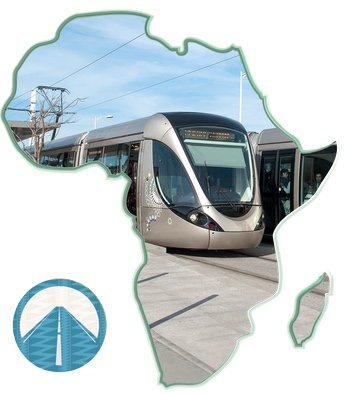
The Integrate Africa priority will be mainstreamed across the other High 5s and the Bank will fast-track the regional integration continental agenda for which several of the agreed programs are already in place. The Bank will scale up its investments in infrastructure development, as expressed in the PIDA program, for example through the development of regional power markets and brokering and coordinating regional infrastructure projects. The Bank will work with other stakeholders to assist in strengthening RECs and national authorities to encourage and support regional ‘soft’ infrastructure sector integration, cross-border investments, elimination of non-tariff trade barriers, the harmonization of investment and engineering codes, and quality assurance and certification standards.
“Regional integration is critical for expanding the size of our markets. We must integrate Africa – grow together, and develop together. Our collective destiny is tied to breaking down the barriers separating us.”
– AfDB President, Akinwumi Adesina
The Bank will also work to deepen Africa’s financial system including operations to promote robust market-based monetary systems. The Bank will continue to promote initiatives to improve Africa’s financial infrastructure including collateral registries, credit bureaus, credit ratings, and payment and settlement systems, all of which are necessary to foster financial stability and the successful operation of modern integrated financial markets. Helping countries lift market access barriers, formalizing women’s participation in cross-border trade and other regional initiatives, and scaling up intra-African trade, supporting regional agricultural value chains, and promoting the movement of people through changes in the visa regime will all contribute towards increased productivity and economic activity.
Improve the quality of life for the people of Africa
Access to Social & Economic Opportunities
- Creating 80 million jobs
- Building critical skills
- Improving access to water & sanitation
- Strengthening health systems
Despite the encouraging economic development enjoyed by many African countries during the last decade, many of them are still characterized by widespread poverty and inequality. Health and education outcomes are among the lowest in the world and the continent’s population has insufficient access to sanitation and safe drinking water.
Weak institutions make it difficult, especially in fragile economies, to deal with calamities such as the recent Ebola crisis or the serious drought that is impacting several countries in 2016. Unemployment and underemployment of youth and women endanger social cohesion and inclusive development. These coupled with the mixed effects of limited access to quality education, health, nutrition, technology and innovation are impediments to accelerating Africa’s growth and entry into higher value-added areas of production and competitiveness. Failure to tackle these issues could deprive a whole generation of Africans the opportunities to develop their potential, escape poverty and support the continent’s trajectory toward inclusive growth and economic transformation.
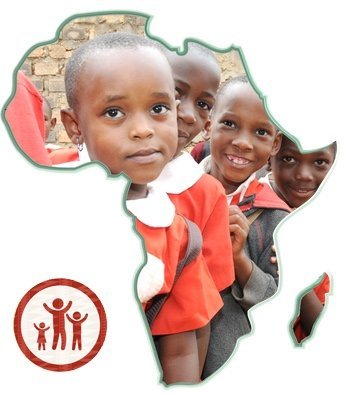
Central to this initiative will be an emphasis on job creation, for which the Bank has prepared a Jobs for Youth in Africa (JfYA) strategy. The strategy is designed to increase direct and indirect employment, resulting in reduced poverty, inequality, and economic and conflict driven migration, and increased social cohesion and political stability. To accomplish these goal, the strategy aims to increase inclusive employment and entrepreneurship, strengthen human capital, and create durable labor market linkages by making use of three strategic levers: Innovation, Investment, and Integration.
“We aim to create vocational and employment schemes for the youth – so that they do not undertake the perilous journey across the Mediterranean to Europe – through such schemes as the ‘Jobs for Africa’s Youth’ Initiative”
– AfDB President, Akinwumi Adesina
Through Innovation, the Bank will create new flagship programs in agriculture, industrialization and ICT as well as an innovation lab that will test, assess, and scale promising solutions to accelerate job creation in Africa. Through Investment, the Bank will undertake interventions to catalyze private sector investment by expanding access to capital through direct and indirect debt and equity investments and reducing risks by providing guarantees and first-loss provisions for banks’ lending to SMEs, especially those owned or managed by youth. Through Integration, the Bank will equip itself and RMCs to become engines for job creation. Bank projects, staff, and systems will be reoriented to address youth employment and the Bank will provide financial support to enable RMCs to pursue policies and regulatory actions favorable to youth employment and entrepreneurship.
The objective of the JfYA strategy is to create 25 million jobs and train 32 million young people, impacting 50 million African’s over the next decade. The initiative hopes to generate US $30 billion in income gains for the African economy. To successfully implement the JfYA program, US $5 billion in resources will need to be mobilized.(1)
(1) As part of JfYA, within the agriculture, the Bank, working with IITA, is championing the Youth Engagement in Agribusiness through the Empowering Novel Agribusiness-Led Employment for Youth in African Agriculture (ENABLE Youth) Programme. An estimated US $1 billion is projected to be used to support enterprise and job creation for youths and women in at least 25 African countries under the Programme. The target of the program is to create about 8 million agribusiness jobs in the next 5 years.
Not only are these five priority areas central to the TYS, but they also are intrinsically linked to the SDGs and the global commitments made on climate change, which were adopted after the approval of the TYS. These five priorities have also been highlighted as critical priorities in the Agenda 2063 for Africa, developed in partnership with the African Union. Figure 1 illustrates the linkage between the SDGs, the TYS and the High 5s.
Although the continent has experienced consistent growth over the past decade, 120 million Africans remain out of work, 42 percent of the population still live below the US $1.25 poverty line, and around one in four people in SSA remain undernourished. Inequality is also high: six of the 10 most unequal countries in the world are African, particularly affecting women and the youth. While it is recognized that Africa is the least contributor to carbon emissions globally, the continent is also the most vulnerable to climate variability and change. Making growth inclusive will require broadening access to economic opportunities for more people, countries and regions, and helping the continent generate much needed productive jobs, while protecting the vulnerable. Helping the continent transition to green growth will require mainstreaming sustainable development initiatives through investments in clean renewable energy, climate smart agriculture and sustainable water resource management, among others.
The African Development Bank intends to scale up operations in the High 5 priority areas, consistent with the objectives of the TYS. To find out more about each of the High 5 areas, click on the icons above.
“When I was elected the eighth President of the Bank, I did say very clearly that we were going to work on five critical issues, which I felt were the most important challenges facing Africa.”
– AfDB President, Akinwumi Adesina



